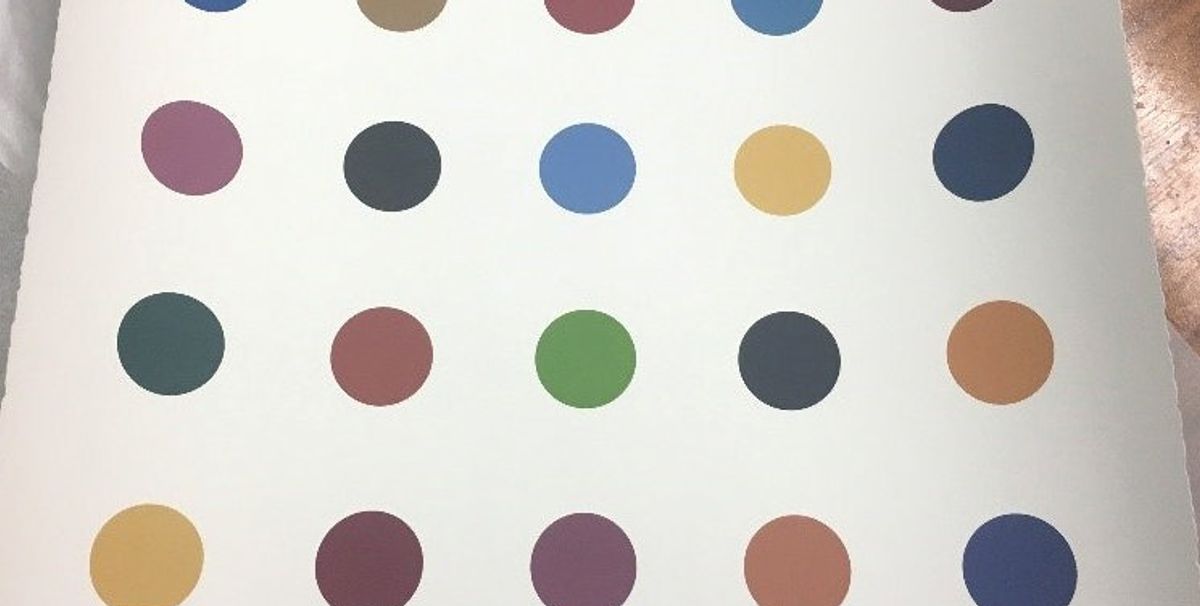Three men have been charged with producing and selling counterfeit Damien Hirst prints, including one from the YBA’s spot painting series. Dozens of collectors around the world bought the forged works online, earning the group more than $400,000, according to Manhattan district attorney Cyrus Vance.
Demand in the market for limited editions can lead to fakes with little or no value, Vance said in a statement. “In this case, the alleged fraud went beyond plain imitation, and the defendants are charged with deceiving a multitude of buyers into purchasing counterfeit art that was falsely passed off as genuine,” he said.
One of the group, Vincent Lopreto, had been released from jail 15 days earlier for a similar scheme before being arrested in New Orleans last week and then extradited to New York, according to the district attorney’s office.
Lopreto has previously been charged with selling knock off Hirsts. In 2014, he pleaded guilty to identity theft and scheme to defraud for selling forged pieces of art, which were advertised online as originals. Lopreto was sentenced to two to four years in state prison.
In the latest case, Lopreto is accused of working with Marco Saverino and Paul Motta to sell the fake works online, creating fraudulent certificates of authenticity and purchase receipts to dupe buyers in the US, UK, Germany, Italy, Macedonia, South Africa, Canada, Taiwan and South Korea. The scheme ran from October 2015 to February 2017, according to documents filed in court. All three were charged on multiple counts of theft, or grand larceny, and scheme to defraud.
Sounding a note of caution to prospective buyers, Vance said there was “no substitute for due diligence”. He continued: “To avoid becoming a victim of fraud, I encourage prospective buyers to confirm an item’s authenticity with the artist, advertiser, or an academic expert prior to making a significant investment.”


